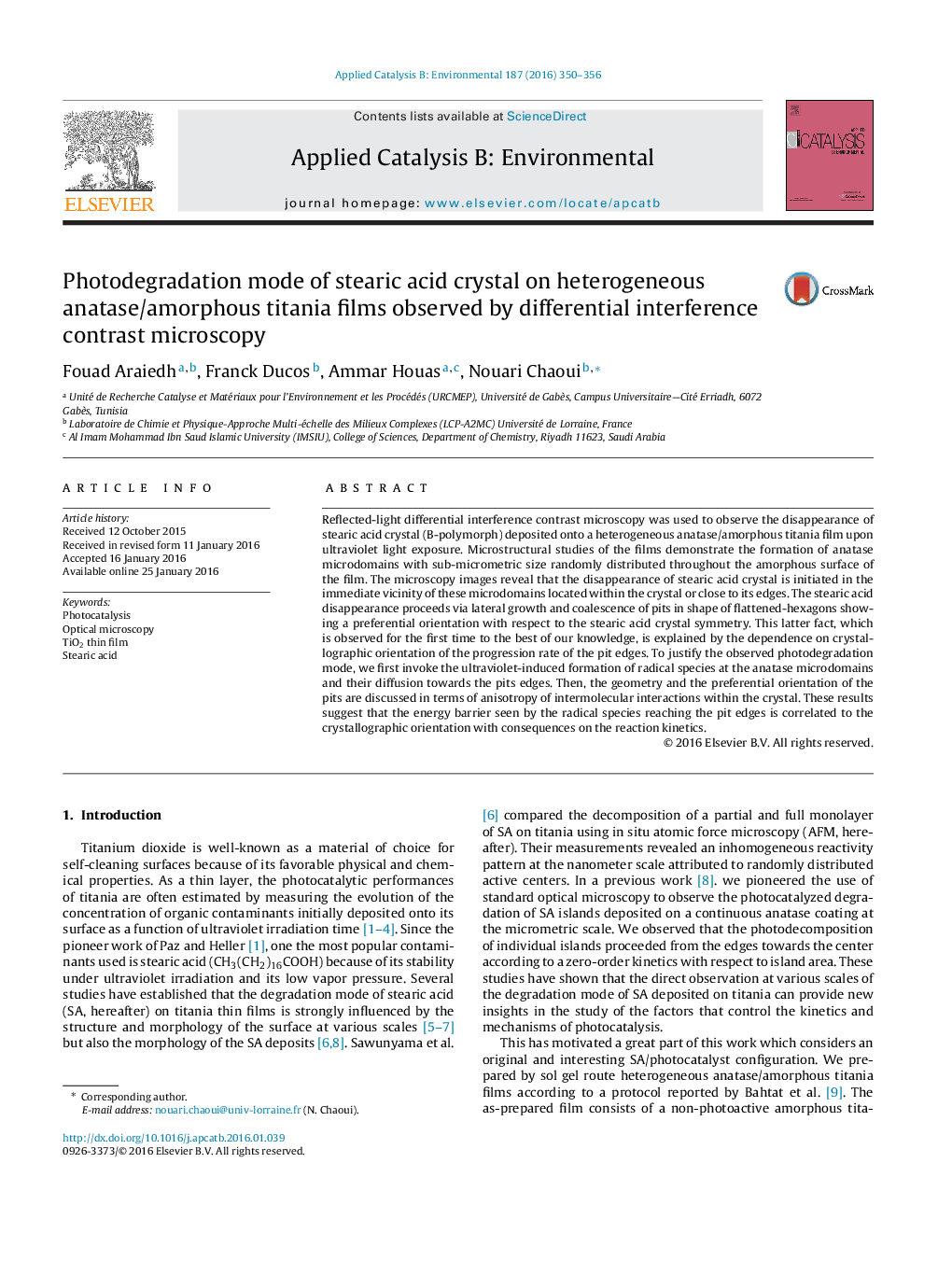| کد مقاله | کد نشریه | سال انتشار | مقاله انگلیسی | نسخه تمام متن |
|---|---|---|---|---|
| 45116 | 46396 | 2016 | 7 صفحه PDF | دانلود رایگان |
• Thin film of amorphous titania with randomly distributed anatase microdomains.
• Observation of stearic acid crystal photodegradation by RL-DIC microscopy.
• Pits in form of flattened-hexagons with preferred orientation relative to the crystal.
• Diffusion of active species from the anatase microdomains towards the pit edges.
• Relative displacement rates of the pit edges due to SA crystal anisotropy.
Reflected-light differential interference contrast microscopy was used to observe the disappearance of stearic acid crystal (B-polymorph) deposited onto a heterogeneous anatase/amorphous titania film upon ultraviolet light exposure. Microstructural studies of the films demonstrate the formation of anatase microdomains with sub-micrometric size randomly distributed throughout the amorphous surface of the film. The microscopy images reveal that the disappearance of stearic acid crystal is initiated in the immediate vicinity of these microdomains located within the crystal or close to its edges. The stearic acid disappearance proceeds via lateral growth and coalescence of pits in shape of flattened-hexagons showing a preferential orientation with respect to the stearic acid crystal symmetry. This latter fact, which is observed for the first time to the best of our knowledge, is explained by the dependence on crystallographic orientation of the progression rate of the pit edges. To justify the observed photodegradation mode, we first invoke the ultraviolet-induced formation of radical species at the anatase microdomains and their diffusion towards the pits edges. Then, the geometry and the preferential orientation of the pits are discussed in terms of anisotropy of intermolecular interactions within the crystal. These results suggest that the energy barrier seen by the radical species reaching the pit edges is correlated to the crystallographic orientation with consequences on the reaction kinetics.
Figure optionsDownload as PowerPoint slide
Journal: Applied Catalysis B: Environmental - Volume 187, 15 June 2016, Pages 350–356
